How to Fish Wire Through A Wall
One of the basic skills of DIY electrical is knowing how to make connections inside switch, light and outlet boxes. But being able to “fish” wire, as the pros call it, through your walls lets you add new switches, lights and outlets exactly where you want them, or add communication cable like Cat 6 yourself.
You don’t have to settle for stepping over extension cords or draping wires across your walls. With these wire-fishing tips and tools, you can put wires where you need them.
Route Cable Behind Baseboard
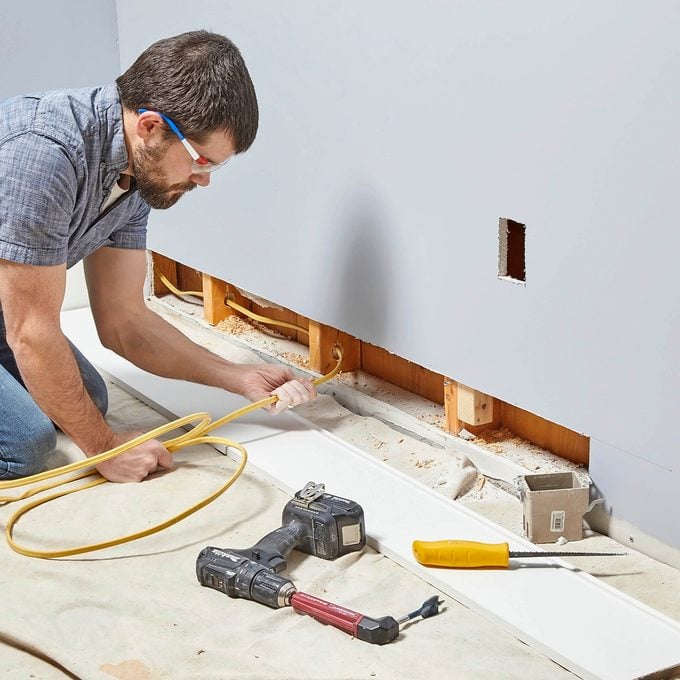
If you’re like me and would rather install miles of trim than patch drywall, this is the way to go.
Remove the baseboard and cut a long, narrow hole in its place. Then drill holes in the studs for your wire to pass through. This works best with wide base trim but can be done with narrow base trim as well. Be sure to keep the holes in the studs at least 1-1/4-in. away from the stud edges to avoid the need for protective metal plates.
Make a Bevel Cut
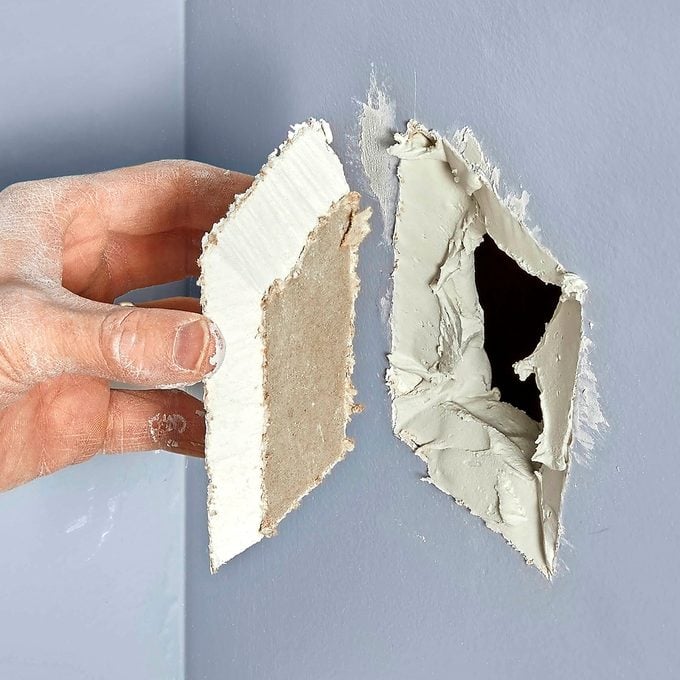
If you have to cut an access hole, make the cut at an angle. Then when it’s time to patch it, spread joint compound around the hole and press the cutout back in. The mud will hold the plug in place. There’s no need for screws or backing, and the plug won’t fall through the hole.
Make a Chase With Trim
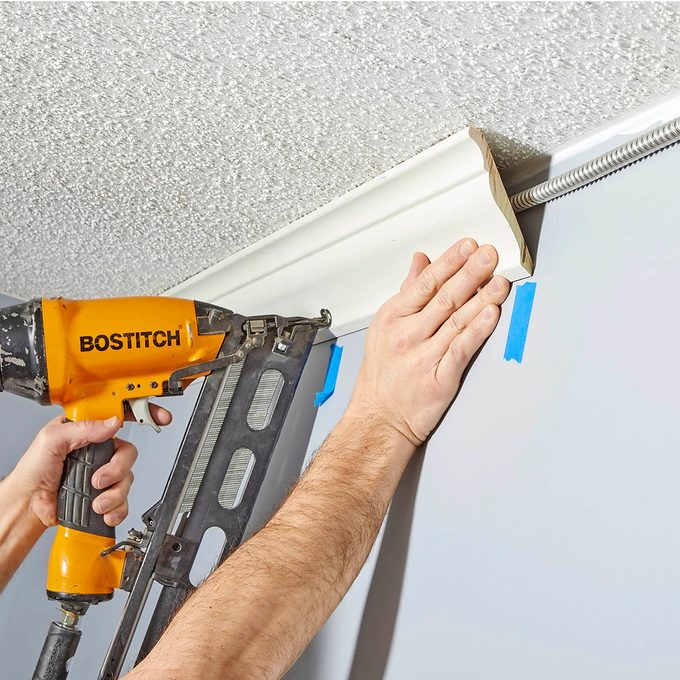
Run conduit or BX cable (armored cable) along the top corner of a wall and cover it with crown molding. You can cut small holes in the wall or ceiling where the wiring needs to exit the room.
Don’t Fish Power Cords
Cords that power appliances, TVs and power strips cannot be placed inside a wall. The National Electrical Code says these cords cannot replace permanent wiring. To avoid seeing these power cords, you can fish cable to add a new outlet nearby.
Give Communication Cable Enough Space
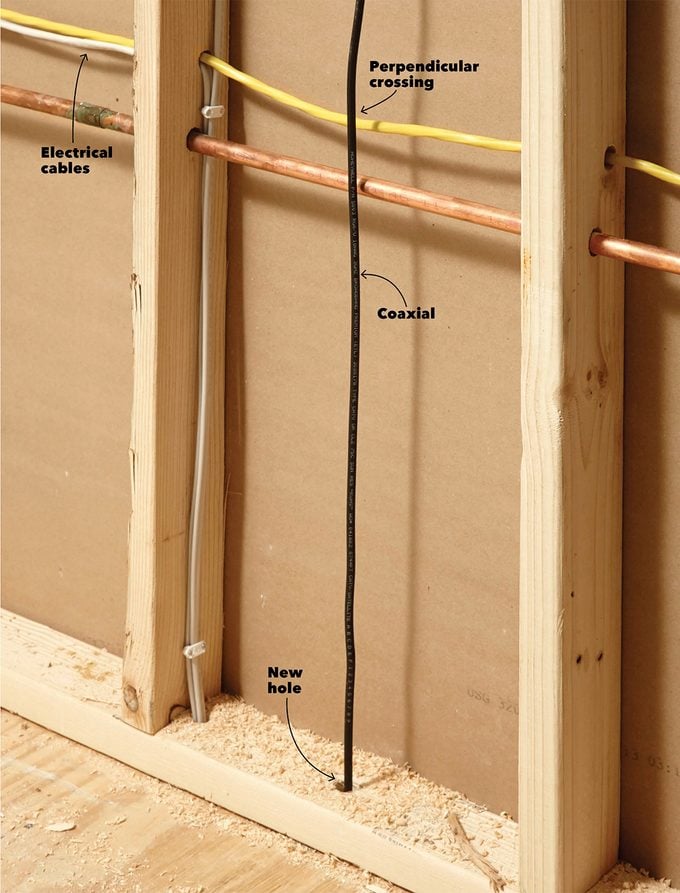
Communication cable like coax or Cat 6 should be kept away from cables that carry high voltage to outlets and lights. Pros recommend keeping them 12 to 16 inches away. If you must cross these cables, do so at a 90 degree angle.
Find the Easiest Route
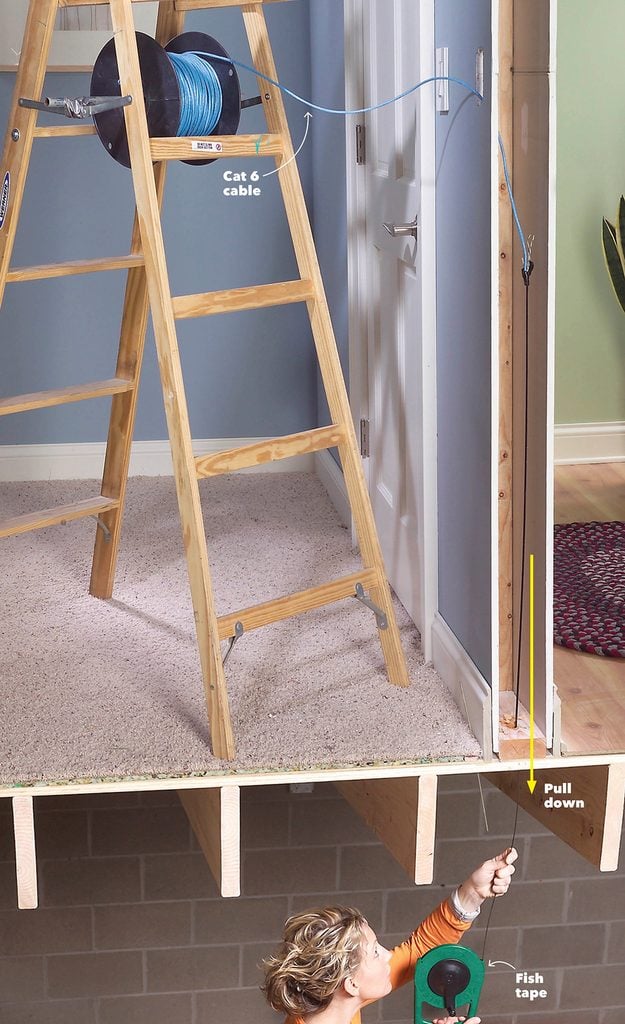
The easiest route is not always the most direct. Take advantage of unfinished spaces like basements and attics to run wire from one end of the house to the other. You might use an extra 50 feet of wire, but it will save you lots of time.
Use a Lot of Cable
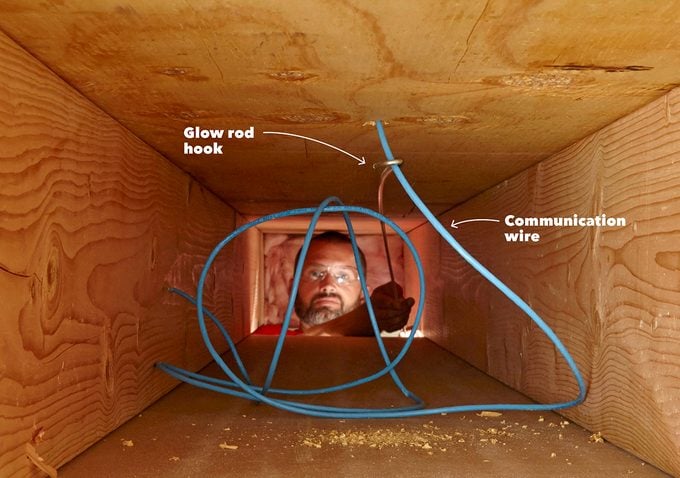
Pushing far more cable than you need into the walls or ceilings is helpful for a few reasons. First, it makes the job of hooking the cable you’re fishing much easier. It also eliminates lots of tugging, which can damage fragile Cat 6 cables.
Hide Wires With Raceway
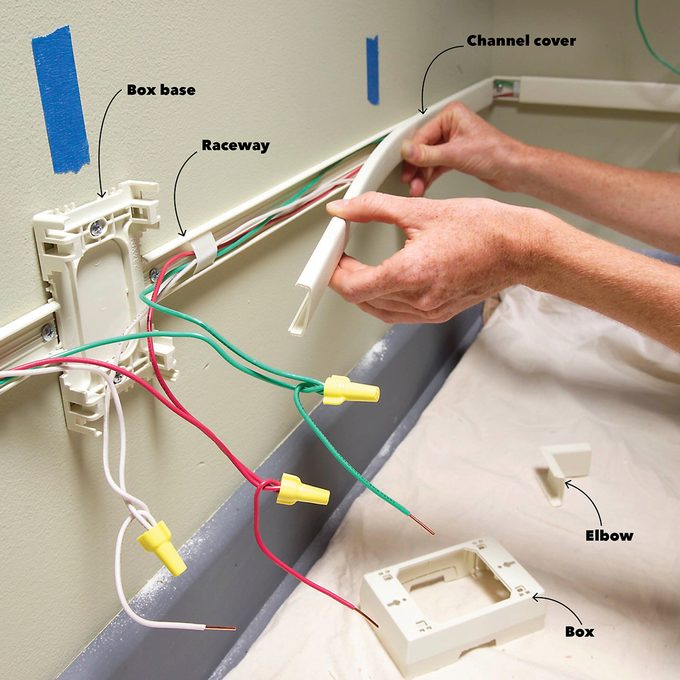
Running wire on the wall surface with raceway is a great way to get power right where you want it without fishing wires through walls. You can hide the raceway behind furniture and paint it to match the wall. Build the raceway from an existing electrical box with snap-together components and hide the wire inside the channel.
Run Conduit in Closets or Cabinets

Conduit or armored cable is another great option for surface wiring, and it’s about half the cost of raceway. You wouldn’t want to run it over your walls like you would raceway, but it won’t be visible in a dark closet or along the backs of cabinets.
Splice Like a Pro
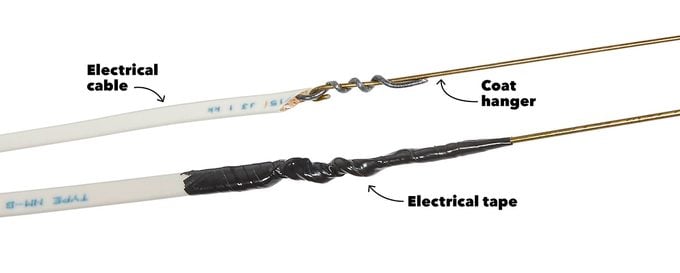
Sometimes you have to pull hard to get a cable through a wall, so make sure the cable is securely tied to your pulling tool, whether it’s a fish tape or a coat hanger.
This is my favorite method: Put the wire through the eyelet or around the hook, then wrap it around your fishing tool. Tape them together with electrical tape, making sure to taper the wrapped section so it will slide through holes.
Don’t Run Cable in Ductwork
Running cable inside ductwork, as convenient as it may be, is not allowed by code. You can run cable in plenum spaces like stud and joist bays for return air, but you’ll need a plenum-rated cable. These cables have special jackets that are nontoxic and rated for fire.
You can find plenum-rated Cat 6 and security cable at electrical supply stores. It will cost about twice as much as standard versions.
Wire Along the Plumbing Stack
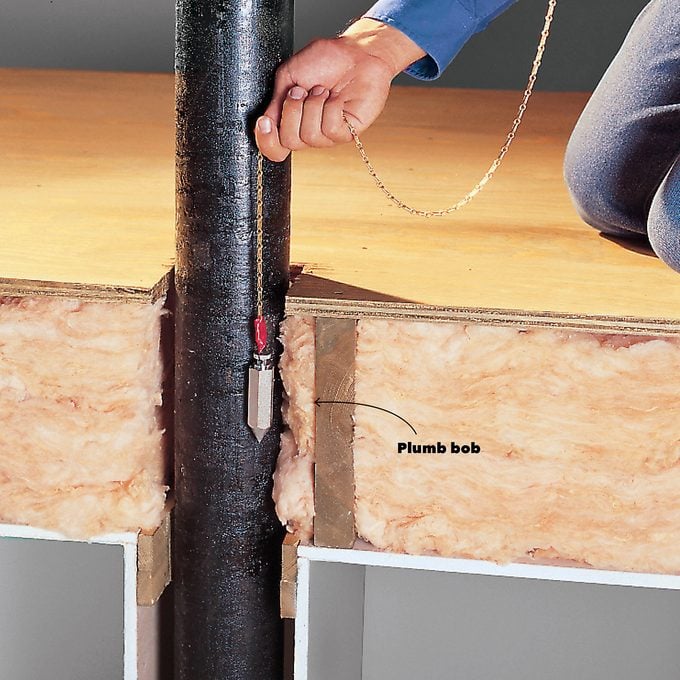
Adding power in an upper level can mean running wires from the basement to the attic. In a two-story home, you’d have three ceilings to go through. But in older homes, sometimes this is as easy as lowering a plumb bob along the plumbing vent stack and pulling up the cable. Newer homes might not have enough space around the stack, but it’s worth checking first.
Drill Two Holes to Turn a Corner
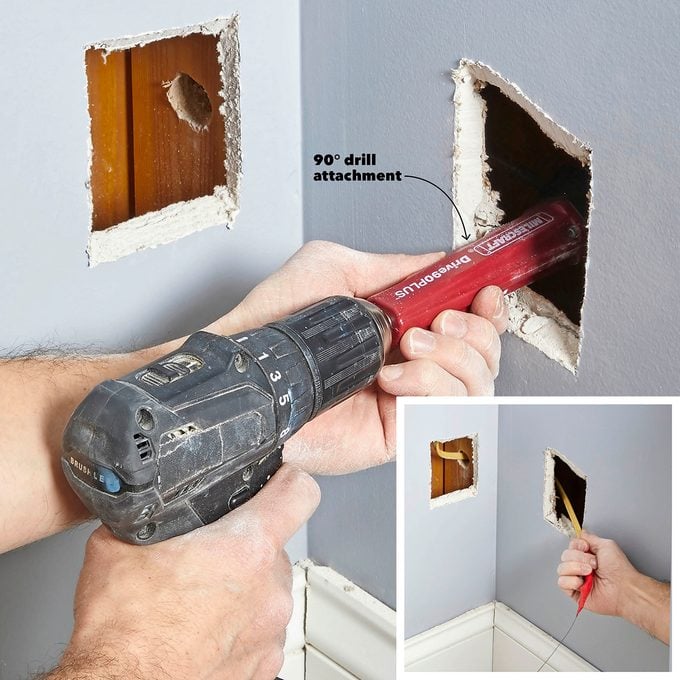
Running wire around corners isn’t as hard as it seems; the key is to cut holes on each side of the corner. With a spade bit in an angle drill, or an angle attachment, drill a hole in each of the corner studs. This will give you a path to pull wire through.
Find Obstructions
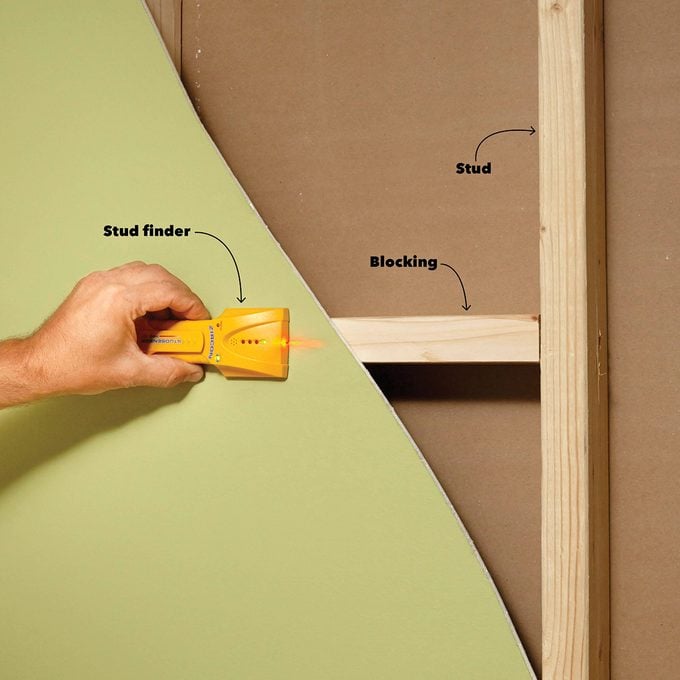
Before cutting any holes in walls, map out the route you want your wire to take. Scan the wall with a stud finder to locate any blocking that might obstruct that route. If there’s blocking in one stud bay, the next one over might make a better path. You don’t want to find out the hard way.
Double-Duty Access Holes
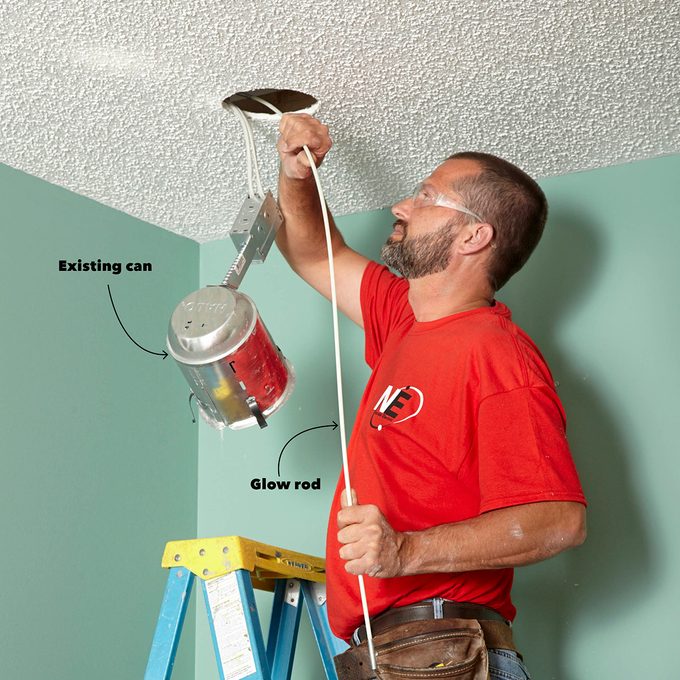
Instead of cutting new holes in your walls or ceilings, you can use holes that are already there. Remove light fixtures, switches or outlets to use existing holes, or plan ahead to use the access hole for a new fixture.
Hide TV Wires With a Wiring Kit
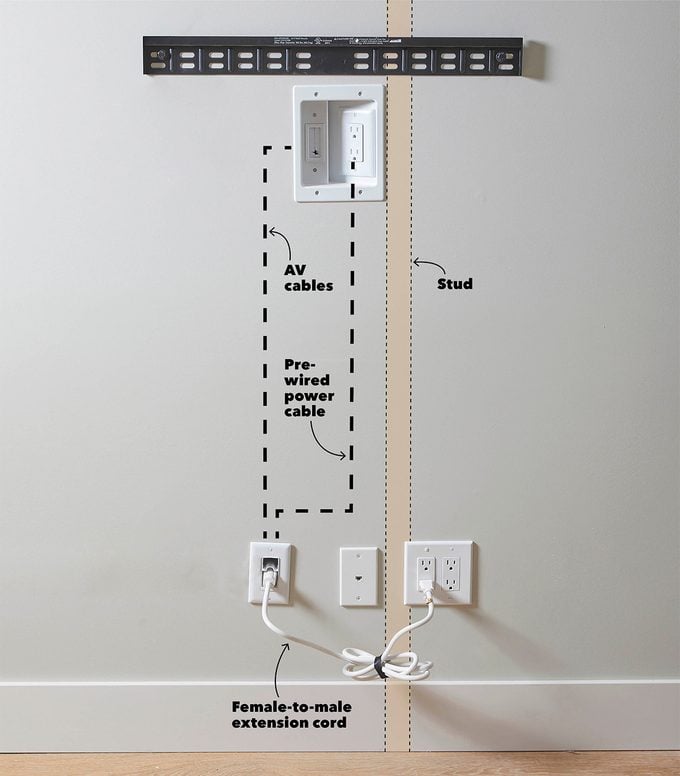
The easiest way to hide TV wires is with an in-wall TV wiring kit ($60). Just cut holes for the two boxes, drop the wire down the wall and then plug in the extension cord. The kit is prewired with a male-ended plug and comes with an extension cord. This is especially helpful if a stud blocks a direct fishing route and you want to avoid a big wall-repair project.
Tuck Low-Voltage Wires

Low-voltage cable doesn’t have the same installation requirements as household power cables. Speaker wire, cables that provide power to doorbells and thermostats, and communication lines like Cat 6 don’t need to be run inside your walls. You can just tuck them under your baseboard, but not under carpet or rugs.
Wire-fishing gear
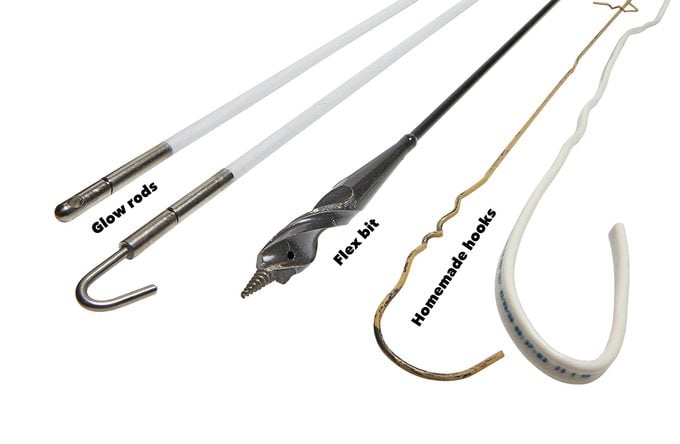
Glow Rods
Glow rods are a staple for wire fishing. Just like steel tape, they can be pushed up walls and along ceilings. They can usually be purchased in several lengths and be screwed together for longer spans. Most come with a swivel eyelet tip and a hook tip. The luminescent rods glow in the dark, illuminating dark joist and stud bays. You can find them for $40 at home centers.
Flex Bit
If you need to run wire across a few joists or studs, reach for a flex bit. They come in long lengths, and extensions are available so you can drill holes through several joists. They have an eyelet at the tip, so once you’ve made your holes you can pull the wire back through with the same bit.
One thing to note: Don’t drill through insulation with these bits. Expect to pay about $50 for a 54-inch flex bit at a home center.
Homemade Hooks
Some of my favorite fishing tools are ones you can make yourself. Small hooks made from cable or coat hangers let you grab cable just out of reach. Best of all, they’re economical.
90-Degree Drill Attachment
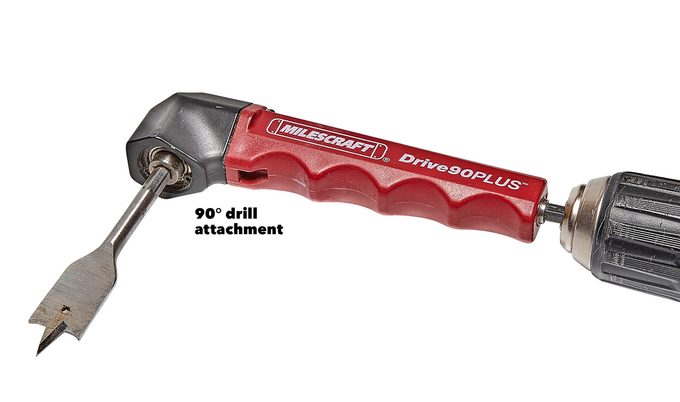
This is the perfect tool for drilling holes between stud bays. About $18 at most home centers, it’s a lot cheaper than a dedicated angle drill and serves the same purpose. It can be a little tricky to use with larger bits, so hold on tight.
Wire-Pulling Magnets
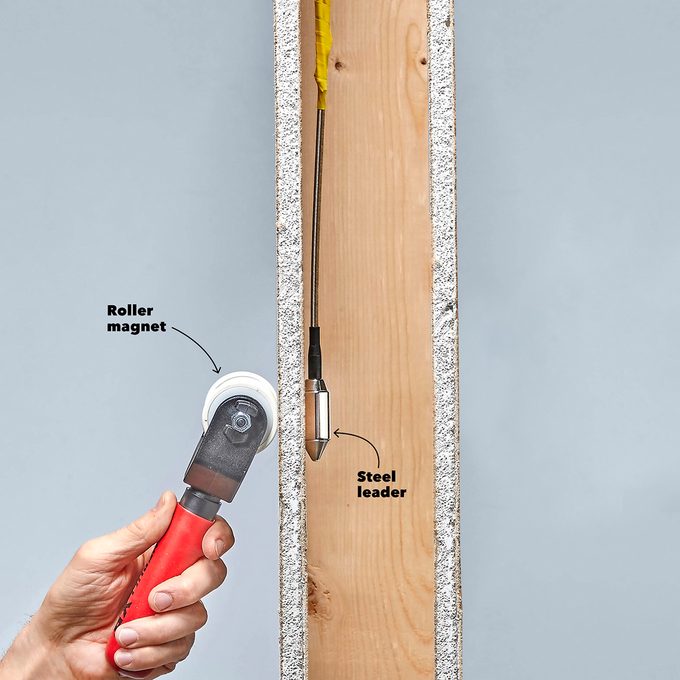
With a few options at different prices, magnets are cool tools for pulling wire along an insulated stud bay. This Magnepull ($125) consists of a steel leader and a roller magnet. You can even use it to retrieve lost bits and other tools from inside walls. Wire-pulling magnets, which range from $40 to $125, can be found at electrical supply stores.
Low Voltage Mud Ring
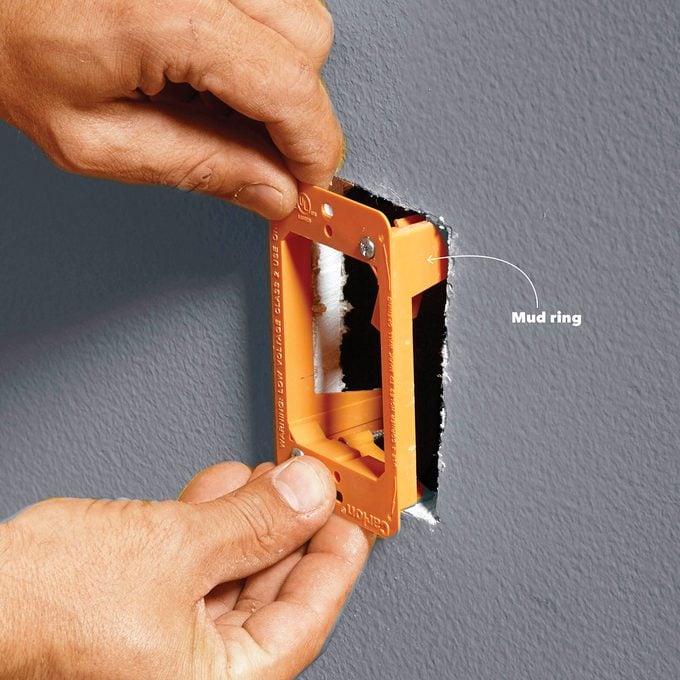
Use mud rings to prevent marring drywall as I pull cable. They also have markers in the corner to outline the perfect hole size and shape for single-gang boxes. When you’re done fishing, leave it in the wall and cover it with a blank faceplate to avoid patching (especially useful for hard-to-patch textured walls). These mud rings are available for less than $2 each at home centers.
Steel Fish Tape
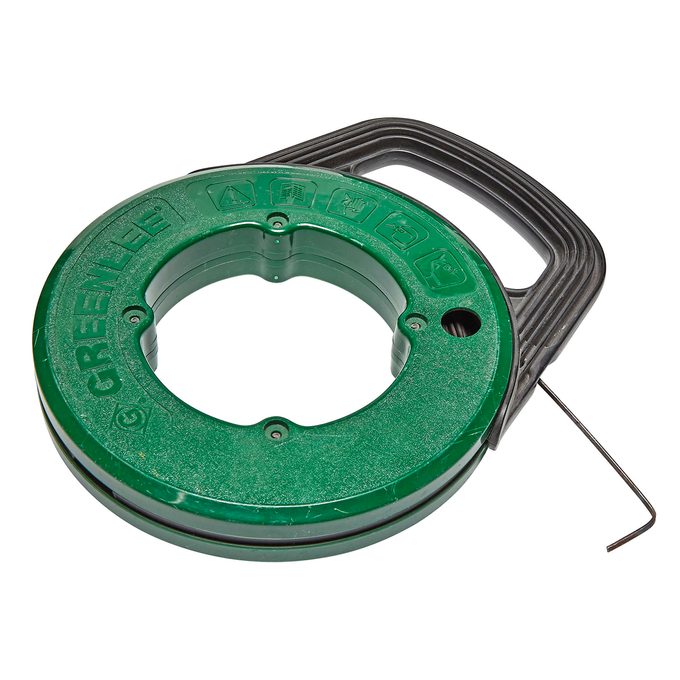
This long roll of stiff steel is great for pushing wire through insulated walls, up wall cavities and down long lengths of joists. A roll starts at $15 at home centers.
No comments